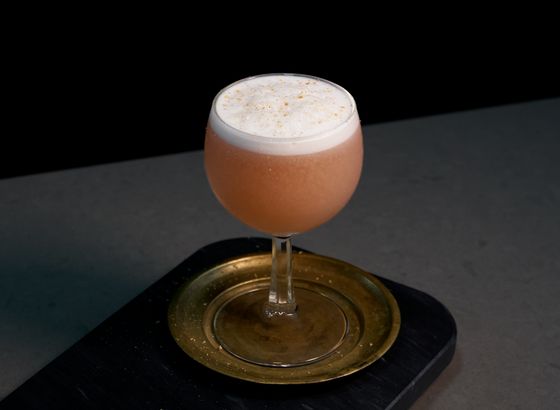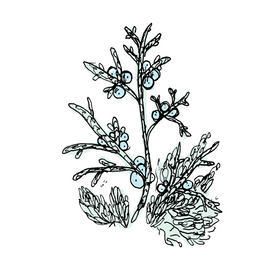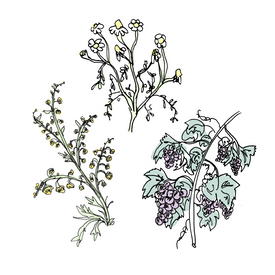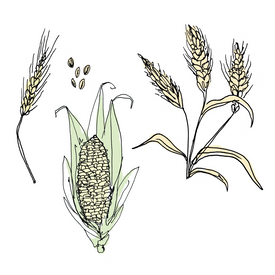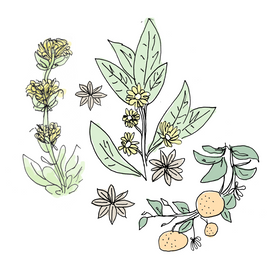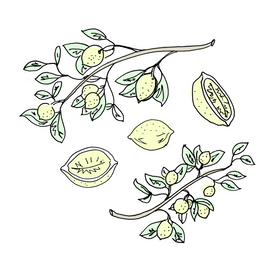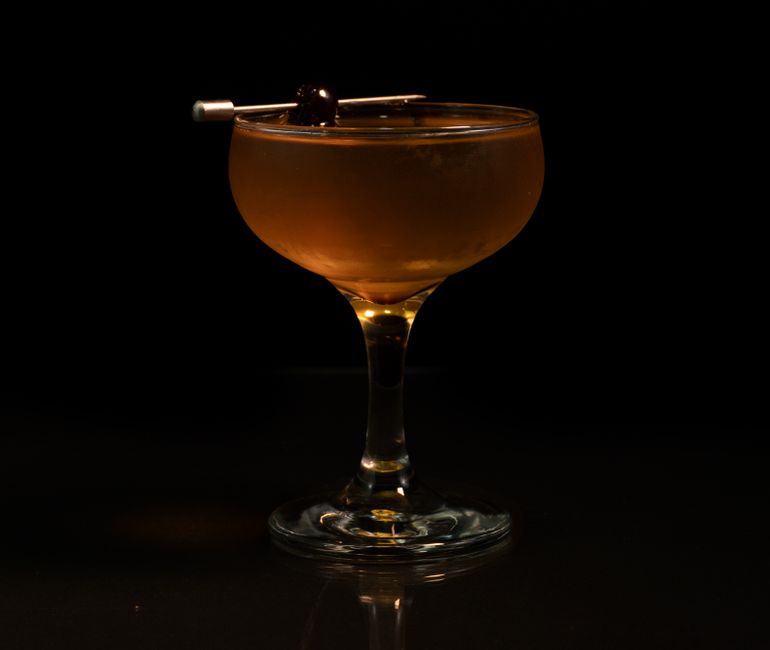
Metropole
This riff on the Manhattan makes for a great way to feature brandy
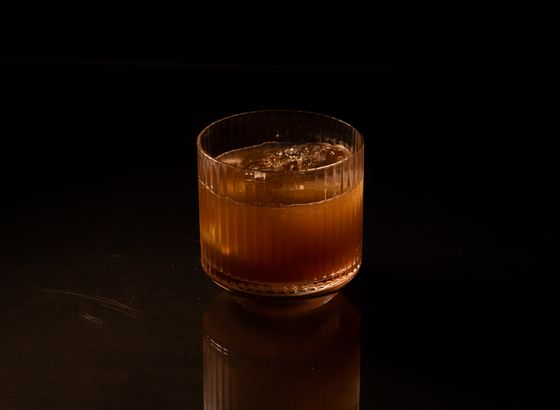
No. 222: Tango Nuevo
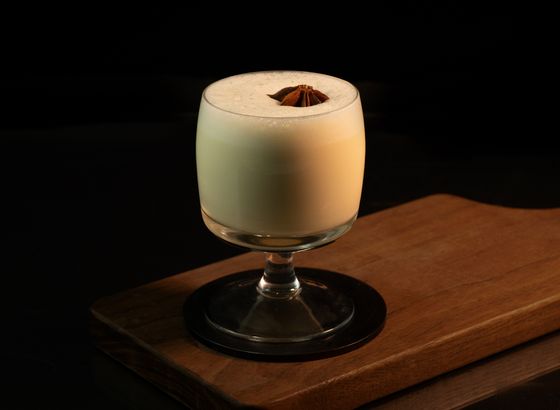
No. 221: Sun Valley
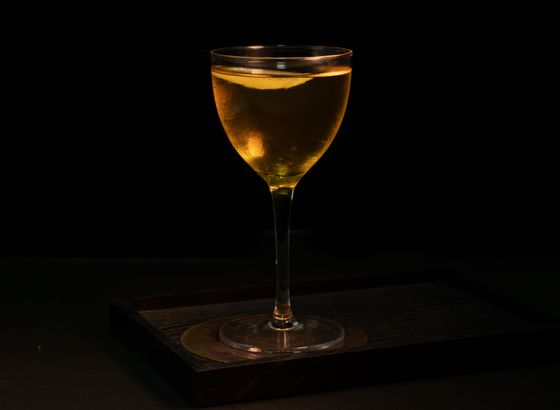
No. 220: Poet's Dream
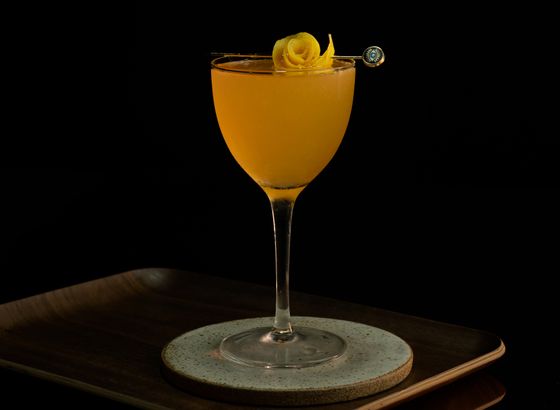
No. 219: Crop Top
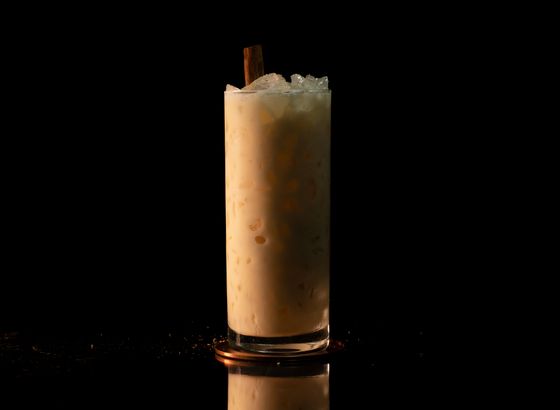
No. 218: Coco no Coco

Instagram is a great way to get updates on new cocktails and keep up with everyone’s favorite redheads
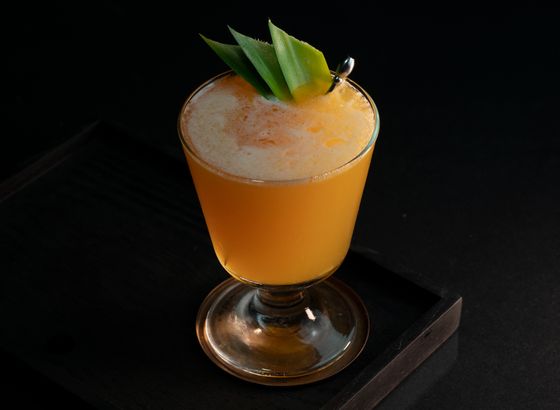
No. 217: Halekulani
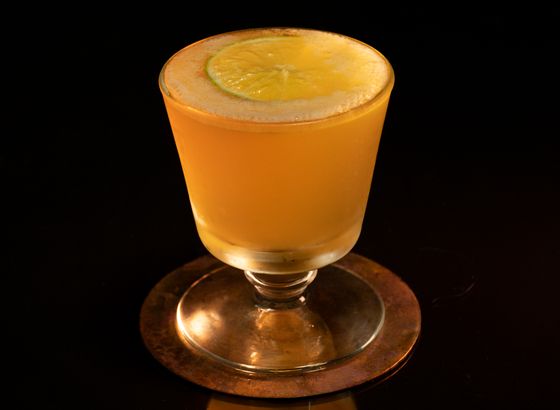
No. 216: Tour Le Carbet
Broadly speaking, gin is a category of neutral grain spirit steeped with botanicals and redistilled. Gin has strong roots in ancient herbal medicine, deriving its main characteristic flavor from the only essential botanical: juniper, which has long been assigned a range of curative benefits. Gin emerged in England after the introduction of jenever—sometimes called genever, Hollands, or Geneva gin—a Dutch and Belgian liquor dating back to sixteenth century Holland. This spirit was built on a malted grain base, like whisky, and had less emphasis on juniper than its dry descendent. In the latter half of the seventeenth Century and the early years of the eighteenth Century, Hollands style gin rapidly gained popularity in England. At some point during the eighteenth century, the sweetened Old Tom style emerged, serving as a bridge between its predecessor and the London dry style popular today.
The United States had been importing and consuming jenever since the mid eighteenth century. By the start of the nineteenth century gin was gaining in respectability and soon began to reach a tipping point in taste preference. Distilling practices were standardized and a cleaner base spirit was developed, allowing for a broader botanical palette. By 1862—when Jerry Thomas published the first cocktail book—bars were serving “improved” gin drinks. Wider availability of ice allowed drinks to be served cold and the cocktail shaker was rattling through bar halls. Hollands and Old Tom were still the predominant choice, found in popular proto-cocktails like gin punch and Tom Collins.
The second half of the nineteenth century saw unsweetened dry gin grow in popularity. In his drinking guide Gin: The Manual, Dave Broom notes that Beefeater gin emerged in 1876 to tap into consumer demand for an unsweetened style, as well as the growing popularity of dry Champagne. By the 1880s consumer preference had shifted to lighter drinks, closing the book on the richer Hollands style. David Wondrich mentions in his book Imbibe! that the only American reference to unsweetened gin prior to the 1890s was in reference to its virtues as a fabric cleaner, but with the publishing of William “Cocktail” Boothby’s The World’s Drinks and How to Mix Them in 1908, dry gin had entered American history as the base of many cocktails. In Post-Prohibition USA, preference for drier drinks grew—both as base spirit and finished product—and old tom began to fade as well, cementing dry gin as the preeminent style.
After slowly falling out of favor, the latest wave of interest in cocktails and small distilleries has sparked a boom in premium gin production. Globally, distilleries are crafting new variations and reviving old ones, often making use of local botanicals in the process, with flavors ranging from herbaceous to citric to floral. Much debate has surrounded the naming of newer styles that have recently emerged, but for our purposes we refer to most of them as the New American style. Gin’s herbal notes pair with a wide variety of ingredients and stand up well to tart and sweet flavors. The spirit’s versatility and wide variation of styles offer nearly endless experimentation options when mixing.
old tom gin • 8 recipes »
Old Tom is a sweetened variety of gin lost to history and only recently revived. Current production offers quite a bit of variation, deriving sweetness from natural botanicals, malts, or added sugar. This is consistent with the diversity among historical recipes, as there was no uniform standard. This gin is markedly different from the popular dry style. In general, it is safe to assume that Old Tom will be mellow in flavor with an intense botanical punch, balanced by a heightened sweetness. Its smoothness can make it a great sipper, something we rarely prescribe to dry gin. The rich flavor works well in pre-Prohibition cocktails like the Martinez or Tom Collins: two cocktails that historically called for the spirit
london dry gin • 39 recipes »
This classic juniper-forward gin is often referred to as London dry gin, or simply dry gin. The word “London” denotes method as opposed to origin of production, requiring botanicals to flavor the gin during distillation with no flavor or color added afterwards. This style is the best choice in sharp, gin forward drinks such as the martini or Negroni. Some London dry gins steep fresh citrus peels or dried peels before distillation, resulting in a bright, citrus heavy flavor. A great example of this variety is George Benham’s Sonoma Dry Gin. The fresh, citrus forward flavor is an excellent choice when mixing drinks like the white lady or bramble.
new american gin • 7 recipes »
The New American Style encompasses a broad category of creative gins that place less emphasis on juniper than the dry variety. Instead, they highlight other botanicals in equal billing. These styles emerged in the early 2000s, often accentuating regional or unusual botanicals. Their fragrant, often floral flavors are not always going to work well in a drink that calls for a London dry, but they offer an excellent and simple way to experiment with classic gin recipes. And when they’re good, they’re really good.

No. 215: Kir Royale
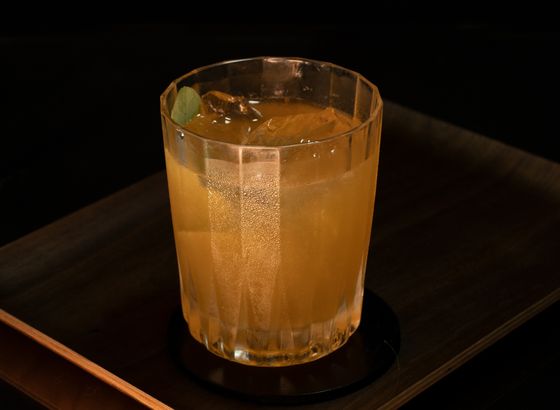
No. 214: Ghost Coast
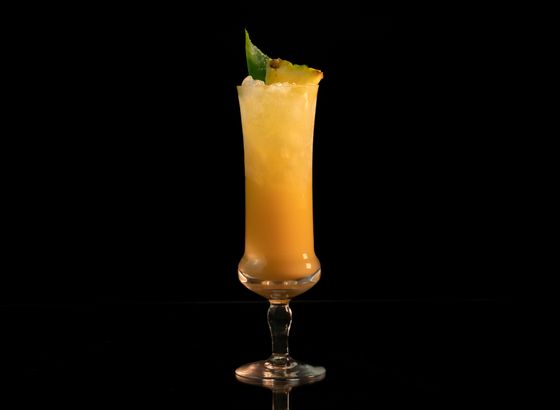
No. 213: Apres-Ski Swizzle

The Tuxedo No.2 email list sends a yummy cocktail to your inbox every friday. No spam. No junk. Just tasty.
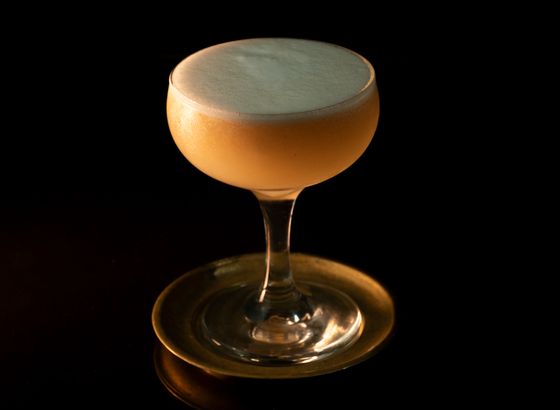
No. 212: Tattletale
Rum is a broad family of spirits distilled from fermented juice of sugar cane, sugar cane syrup, sugar cane molasses, or other sugarcane byproducts. This sugarcane base gives rum the sweetest profile of all the popular spirits, but don't let that fool you: rum is not all one-dimensional sweetness, in fact it has some of the most complex flavors of any family of spirits, ranging from confectionary goodness to earthy funk.
Possibly as early as the 16th century, fermented cane juice was being distilled in Brazil, resulting in the spirit now known as cachaca. Sugar has been cultivated in the Caribbean for centuries. Molasses based rum has its earliest known origins in the Caribbean, where it was first refined and commercialized in Barbados. The molasses byproduct of sugar production was considered waste until, at some point, sugar producers realized this waste was fermenting, and they decided to make something of it. Distillation techniques were refined and well-known by this point, so it was a natural move to distill the fermented molasses and make a delicious beverage. Not surprisingly, it was a hit among sailors, pirates, and American colonists. Rum is tied to the social, economic, and political history of the colonial islands and America at large. In his excellent book And a Bottle of Rum: A History of the New World in Ten Cocktails, Wayne Curtis puts it simply: “Rum is the history of America in a glass. It was invented by New World colonists for New World colonists.”
Rum can legally be distilled anywhere in the world, but it’s most commonly associated with places like Trinidad, Jamaica, Cuba, Guyana, Barbados, and Mexico. Classification of rum can be tricky and some deem the “color” system meaningless. In the book Exotic Cocktails, Rum, and the Cult of Tiki, Smuggler’s Cove offers a more elaborate classification system based on how the rums are made, which we respect and recommend to anyone interested in rum. However, for a small home bar, it does make it easier to stock a few bottles that conform to the language of many cocktail recipes. Rum is very confusing, but the way to break it down is not actually that different from more familiar spirits. The main differentiators are the variety of sugar product that is distilled, the type of still used for distilling, and the aging process. Jamaica is perhaps currently the most prolific rum producing nation, known for its pot stilled molasses rums with an intense, full bodied flavor. Continuous column stills, on the other hand, are used to produce white spirits. Cuba is famous for column-distilled lighter rum, with Bacardi leading the way. Countries such as Martinique and Guadeloupe are famed for producing a distinctive style of spirit distilled from the fresh juice of sugarcane, known as rhum agricole.
Rum was used in some of the earliest documented punches and was very popular in proto-cocktail drinks in colonial America. During prohibition, Americans flooded Cuba and fell in love with the lighter Bacardi rums and their associated cocktails, like the timeless Daiquiri. Cheap island rum became popular during WW2, and lighter rums dominated for some time. Aided by the latest cocktail wave and the rise of micro distillers, the last few decades have seen a resurgence of production and consumption of premium rums, with an emphasis on aged varieties. The most popular use for rum in the cocktail world is in tiki drinks: these long drinks are served in tropical destinations around the world, where they are often preferred by cocktail skeptics for their fruity, sweet profiles. That said, rum is one of the most versatile spirits in the world and can be employed in almost any style of drink.
light rum • 11 recipes »
As per its name, this variety is clean and lighter bodied, though often aged very briefly and filtered. Light rum is the most popular rum for cocktails, and is typically found in rows behind hopping beachside bars. Staples like Bacardi are fine, but we love the banana flavors in Plantation three-star and the sweet vanilla in El Dorado three year. This drink is crisp and tangy, with a fresh, clean flavor, most expertly used in a classic daiquiri.
gold rum • 14 recipes »
Gold rums tend to be a mix of spirit old and new. Slightly more complex than white rums due to aging in oak barrels, they’re still good for cocktails with an increased complexity and flavor. Gold rum represents a higher-proof family of rums with a maritime history. Smith and Cross is the most popular gold rum, but we absolutely love Hamilton navy strength.
dark rum • 20 recipes »
Dark rums can be colored to look like aged rum and employed as a cheap replacement for the good stuff. That said, there is a long history of great cocktails that use dark rum, and with a long and storied history this spirit is nothing to scoff at. Look for Hamilton black or Goslings. Try this in a Palmetto or a Hot Buttered Rum.
aged rum • 5 recipes »
The truly good stuff is aged for long periods of time with a darker, fuller flavor profile. An exceptional example of this is Guyana’s Demerara rum. Demerera is made from cane grown in Guyana, with long aging and a rich, dark flavor profile similar to Jamaican rum. It is distilled using old stills, thought to be indicative of how rum of old may have tasted. Aged varieties are the preference for connoisseurs of sipping spirit. The apex of flavor in the cocktail world, dark rum has it all and can transform many cocktails from ordinary to transfixing. Zaya and El Dorado offer some of the best flavors for mixing.
rhum agricole • 2 recipes »
Rhum agricole is an incredible expression of the diversity of rum. Distilled from fresh sugarcane rather than molasses, rhum has a flavor that is minerally, dry, and complex; not unlike a good bourbon. Terroir, or where the sugarcane was grown and the elements that lends, is more present in this variety. These rums can be white, gold, or dark, with flavors that incorporate vegetal notes and pleasant grassier flavors into the complex rum backdrop. Their earthy sophistication and drier profile make for a good variation on a classic whisky or gin drink.
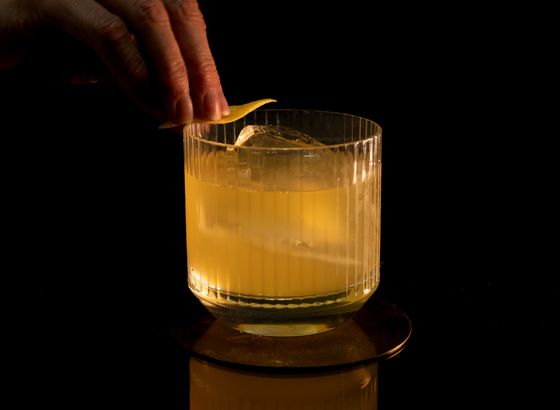
No. 211: Yuzu Choco
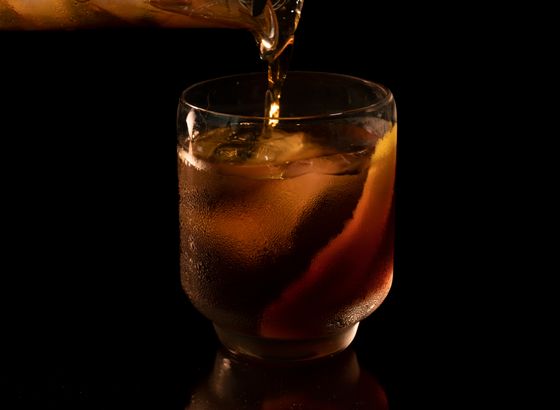
No. 210: Gentleman’s Exchange
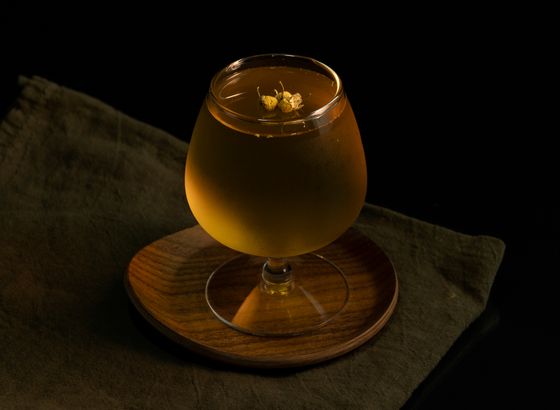
No. 209: Shafer’s Eureka
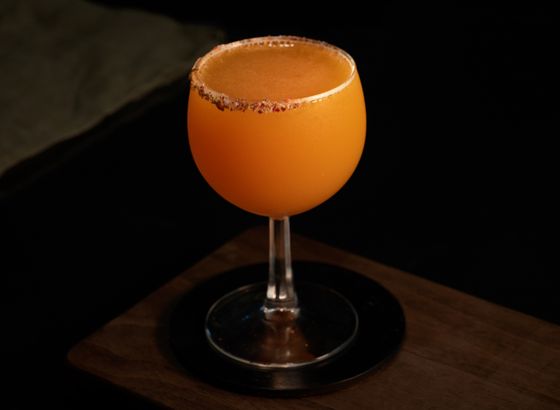
No. 208: Electron
Fernet is generally agreed upon to be a member of the amaro family, but in the world of italian digestifs, nothing is straightforward, and even this simple quantification is not a unanimous decision. As Brad Thomas Parsons notes in his book Amaro: “Most would agree that fernet is a subcategory or class of amaro, typically defined by common ingredients like aloe ferox, myrrh, and chamomile, but some say no, amaro is amaro, fernet is fernet.” While this stance is less popular, it isn’t unreasonable; fernet follows a specific direction in flavor that is recognizably distinct from traditional amari. While there is no agreed-upon set of ingredients that are necessary to make fernet, it does follow a loose subset of flavors and is typically dryer, with fewer baking notes and more intense medicinal flavors. Some fernets are extremely dry and medicinal, with world-famous fernet-branca serving as CEO of that pack. Mark Bitterman notes in his Field Guide to Bitters & Amari that American’s found fernet-branca so “bitter and unpalatable that 95 years ago authorities acquiesced keeping it legal (for medicinal use) during Prohibition.” Indeed, while fernet-branca’s reputation is strong as a badge amongst industry folk, it holds an equally strong reputation among Americans as something so gross it can be used to play tricks on unwitting friends.
When using fernet in cocktails, it is particularly important to understand how amari and bitters relate. While bitters and amari are considered separate concepts by the United States government and are regulated differently, in concept there is little difference other than intent: amari is meant for sipping, and bitters are meant for mixing; that is the only clear and present difference. The reason it is important to understand this distinction with fernet is that dryer, more herbaceous fernets like fernet-branca are not significantly different from bitters, both in taste and application. Adding a half-ounce of fernet to a cocktail is not remarkably different from adding a half-ounce of Angostura to a cocktail, outside of the fact that Angostura, with it’s balanced and spicy profile, might be more likely to work out. Fernet-branca is a very dry ingredient, and offers very little sugar to balance out its boisterousness. Because of this, most simple cocktails you see here will employ fernet like a bitter. Drinks like the Toronto and hanky panky are outstanding examples of this pattern. In drinks with bigger bodies and more boisterous flavors, fernet can stand up as a base. Drinks like the apotheke, Black Betty, and odd bedfellows follow this pattern.
A second, equally important element to understand when working with fernet is that, like all amari, they can vary wildly in the way they are balanced. The classic fernet-vallet, for example, is much more balanced than branca, with significantly fewer menthol notes and a mild bitterness. The same goes for the popular R. Jelinek. Fernets like these can be used more liberally in drinks like the Toronto and hanky panky, or in the same amount for a milder cocktail. Conversely, newer upstarts like Fernet Francisco or Fernet del Frate offer similarly pungent profiles to the more famous fernet-branca, and should be used with an equally delicate touch.
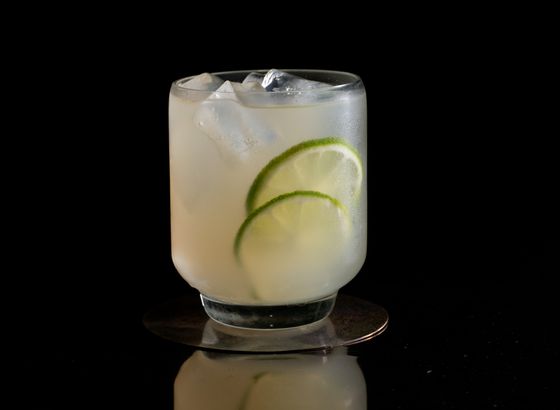
No. 207: Apium
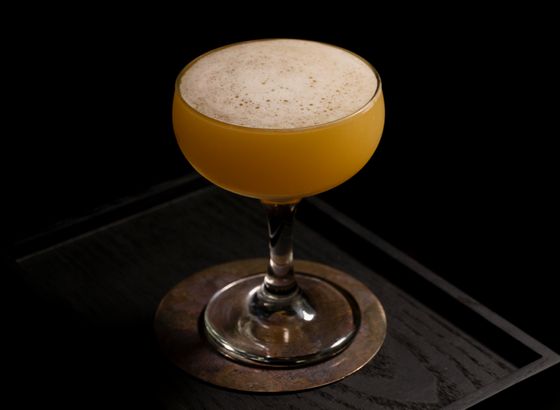
No. 206: Paris is Burning
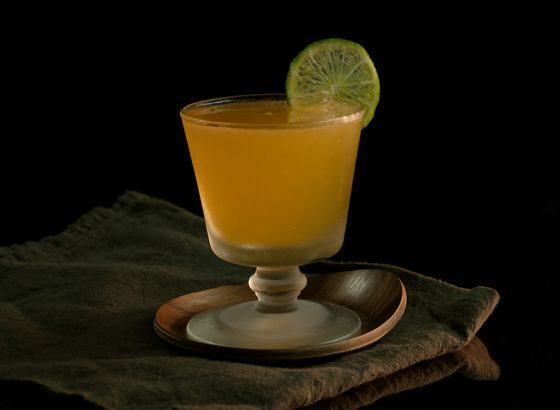
No. 205: Royal Bermuda Yacht Club
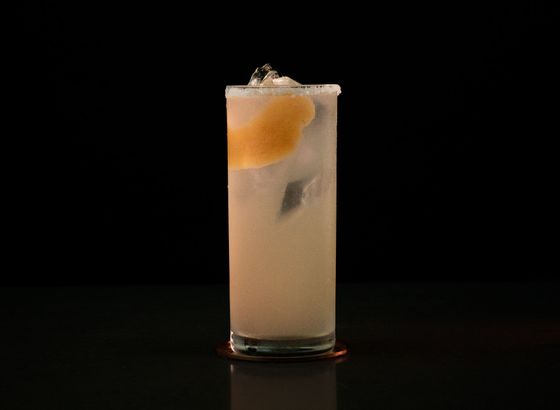
No. 204: Paloma
Vermouth has a claim to the title of world’s oldest alcoholic beverage, but this mostly depends on how broadly we define vermouth. The earliest forms of fermented wine were crude and likely tasted bad. Infusing them with various local herbs and spices not only helped remedy the taste problem, it also packed the concoctions with vitamins, minerals, and sugars that people used as medicine. In his book Vermouth, Adam Ford outlines three different early examples of these proto-vermouths, all from the stone age. The first and earliest came from China circa 6200-6500 BCE, where a team of historians uncovered pots with traces of wine, honey mead, and rice malt. Similar concoctions were discovered in what is modern-day Iran and Egypt, around 5400–5000, and 3150 BCE, respectively. While these ancient discoveries are certainly fascinating, the delineation between mulled, aromatised, and spiced wines—especially during ancient history—is a foggy one. It is a bit of a stretch to lump all of this into the history of vermouth, and more apt to say that these stone-age concoctions are a part of the history of all wines, including vermouth. But for our purposes, which is making cocktails and learning about their ingredients, and within the context of modern history, for which vermouth is far-and-away the most popular infused wine, vermouth is a great proxy for what ancient alcohol might have looked and tasted like.
The easiest way to delineate vermouth from its historical kin is through the ingredient that likely gave rise to its name. Wormwood, or wermut in German, was one of the principal ingredients in the first versions of vermouth emanating from Turin cafes during the 1700s. These drinks, which were dramatically more sophisticated than the hippocras that inspired them, benefited from a massive price drop in spices. When Antonio Benedetto Carpano first began serving the first vermouth, it purportedly contained fifty ingredients. Why? In the words of Ford: “The Spanish, as we know, set out for the west and brought an entirely new crop of spices back from the New World. As a result of these explorations, the price of spices dropped like a hammer into a lake.” When Carpano left his day job as a wine shop assistant, he could walk across the street and buy spices for a pittance that not long ago were worth their weight in gold. This moment in time, and the amazing mixtures it inspired, likely define vermouth more than any single ingredient. The true magic of vermouth is that—just like it’s best friend the cocktail—it has few rules.
While the mid-century dry martini epidemic destroyed the quality vermouth market in the U.S., great vermouth continued to be sipped all over Europe. With the cocktail revolution in the early 2000s, quality bottles slowly trickled back into the American market, and today, a wide gamut of incredible vermouths can be procured at many specialty shops. In fact, so many great vermouths exist today, it can sometimes be difficult to choose. Don’t worry: we have your back, but not before a quick word on storage.
Vermouth is wine and should be treated like it. Once opened, it will start going bad. Because it is less delicate than wine, it will keep longer, but not significantly longer. We recommend storing it in the fridge, where it will stay good for several weeks, and pretty good for several months. We don’t host enough parties to go through a bottle of vermouth in a couple weeks, so we can attest that a bottle of decent vermouth stored in the door of the fridge will do ok even after a month of being opened. Whatever you do, refrain from keeping your vermouth out with the rest of the bar. As much as one might prefer that ornamental Dolin label amongst your other bar staples, we can assure you that the taste of spoiled vermouth isn’t worth it.
sweet vermouth • 28 recipes »
A good sweet vermouth is one of the most complete drinking experiences one can have. Tangy, bitter, sweet, and spiced, this brew has it all. Even better, sweet vermouth makes a cornucopia of fantastic classic cocktails. For a vermouth-heavy drink, try a Vieux Carré, bamboo, or creole. For something a little unexpected, try a harvard, palmetto, or maybe a Remember the Maine. If all else fails, there is always the ineffable Manhattan. Buying sweet vermouth is easy too. If you aren’t looking to spend a lot, buy Cocchi di Torino. If you want to spend a little more, buy Carpano Antica. If you want to spend even more, buy something from Del Professore; you won’t regret it. From here, there are endless new vermouths to explore. Lo-Fi, Tempus Fugit and Contratto all make excellent bottles.
dry vermouth • 23 recipes »
Bone-dry, brash, and bitter, dry vermouth is the intense yin to sweet vermouth’s yang. Sometimes called French vermouth due to its origins, this style is harder to work with, but a clear color and incredible flavor yield heightened rewards for the greater effort. For something vermouth-forward, try a chrysanthemum or a claridge. For something perfectly balanced, opt for a Ford, El Presidente, or Brooklyn. If none of these sound quite right, then consider the infamous martini, but do consider making it with more than a splash. Buying dry vermouth can be riskier than buying sweet vermouth. Whereas with sweet it feels almost impossible to go wrong, the complex and intense flavors of dry vermouth can often be difficult to work with. Both Vya and Lo-Fi dry vermouths, for example, are excellent examples of the spirit, but with intense and bone-dry profiles, they don’t work in every cocktail. The most flexible dry vermouth is Dolin Vermouth Dry. Cinzano is extremely cheap and also easy to work with.
blanc vermouth • 3 recipes »
Sometimes called bianco vermouth, blanc vermouth is light in color like a dry vermouth, but has a sweet, viscous body like a sweet vermouth. Try it in the Fair Harvard, or as a historically appropriate substitute in drinks like the el presidente and turf. Blanc vermouth is great fun to experiment with, as it can change the color and character of many sweet vermouth drinks without altering the flavor profile. Some cocktails historians believe that many pre-prohibition dry vermouth drinks actually used blanc vermouth, so give it a whirl in classics like the martini and see what happens.
rouge vermouth • 0 recipes »
Rouge vermouth has the color and spiced complexity of a classic sweet, but with a sugar profile more akin to dry. Whiskey enthusiasts like rouge vermouth in their cocktails, because the spiced complexity works well with whiskey, but the lower sugar content allows the whiskey to open up more cleanly. Try it in a classic Manhattan, or sweeter creole classics like the Vieux Carre or Cocktail à la Louisiane.
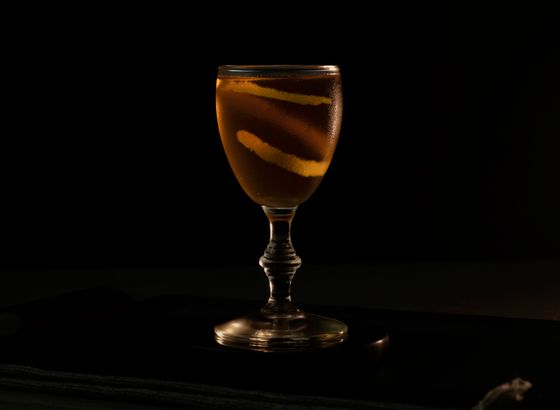
No. 203: French Canadian
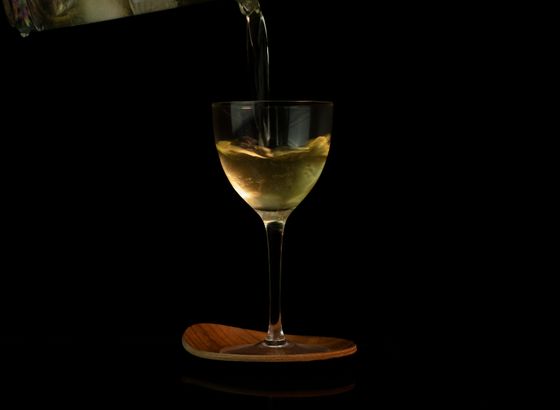
No. 202: Vesper
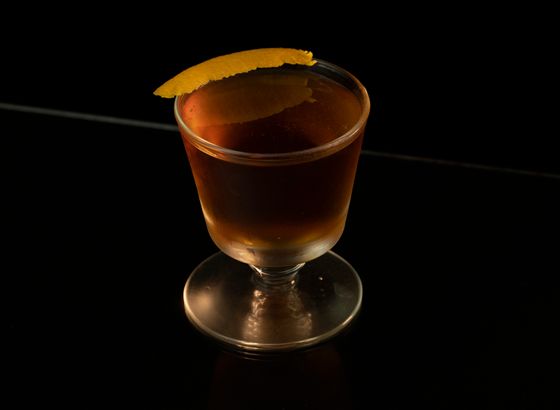
No. 201: Last Man Standing
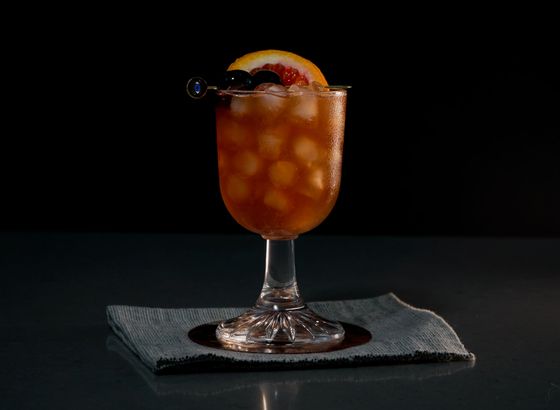
No. 200: Groceries for the Queen
Whisk(e)y encompasses a broad category of spirits distilled from various fermented cereal grains and aged in wooden casks. Various grains are used for different varieties, including barley, corn, rye, and wheat, which in turn lend unique flavor to their respective product. Malt whisky is made primarily from malted barley, whereas grain whisky can be made from any type of grain.
In the 15th century, the art of distillation migrated from the European continent to Scotland and Ireland, where lacking the vineyards and grapes of the continent, they turned to fermenting grain mash, resulting in the first distillations of modern whisky, which were raw and unaged. European colonists brought their whiskey distilling practices to America, and centuries later American whiskey is a product unto itself with unique standards of identity. Whiskey-making was one of the first cottage industries in the new world, predominantly made by farmer-distillers, for whom it was a practical waste reduction and profit avenue. Until the mid-eighteenth century, whiskey was made in relatively small quantities and without distinctive or consistent techniques.
Improved distillation technology allowed manufacturers to produce whiskey more efficiently, and at a lower cost, which led to the production of grain whisky, a less intense spirit than its malt based relative. The lighter flavored grain whisky, when blended with the more potent and fiery malts, extended the reach of Scotch whisky to a considerably wider market. Rye whiskey was very popular during Colonial times, especially in the Northeast US, traditionally produced in Pennsylvania and Maryland. Prohibition damaged the industry and only a few distilleries—such as Old Overholt—continued production after repeal, although much of the production has long since decamped. A stall in brandy production in 1880s France left an opening for whisky to emerge as a top player in the spirit industry.
Bourbon, Tennessee whiskey, and rye are all examples of straight whiskey, which must be aged in newly charred oak barrels for a minimum of two years. Only water is added to dilute the alcohol, which must be at least 80 proof. Blended whiskey is composed of both straight whiskey and neutral spirits; generally, the taste is more mellow than both the straight or single malt whiskey varieties. Bourbon, rye, and blended scotch are the most frequently employed whiskies while mixing, and likely one of the first bottles to occupy a growing home bar. They are inseparable from the origins of North American cocktails, forming the base of some of the most beloved and fundamental recipes. Rye, not bourbon, served as the base for many pre-prohibition favorites. For some time rye faded from production and bourbon slipped its way into many of the recipes. Thankfully as bartenders and imbibers have increasingly taken to flipping through the pages of old recipe books, rye has experienced a revival and is once again readily available to recreate the spicy formulas of old.
bourbon • 25 recipes »
Bourbon’s smooth, sweet, full bodied flavor makes it the base of choice for many of the most popular whiskey cocktails. It is a very versatile whiskey made from a grain mixture of at least 51% corn, aged in charred new oak, and distilled to no more than 160 proof. No blending or additives—except water to reduce it to bottling proof—is allowed in bourbon. Distilled since the 18th century, this variety has a long standing association with Kentucky, but this association is loose as opposed to strict; there are no geographic standards of identity like Scotch or Cognac, and it may be made anywhere in the United States. It’s versatility lends itself nicely to a wide range of drinks ranging from the world-famous mint julep to old classics like the seelbach and newer standbys like the revolver.
rye • 27 recipes »
The spicier, slightly fruitier cousin to Bourbon, rye whisky is produced from a fermented mash of not less than 51 percent rye, and stored in charred new oak containers. Historically produced primarily on the east coast, it is the historical foundation for some of the most iconic North American cocktails. Rye adds a lighter, drier character to drinks, mixing well with rich and bright ingredients alike. There is a notable spiciness and slightly bitter flavor that naturally expels from the grain itself. If you're looking for an authentic Sazerac, Vieux Carre or Manhattan, you'll want to pick up a bottle of rye. For those more accustomed to bourbon, try a variety such as Rittenhouse Rye, which has a rye content closer to the minimum.
scotch • 11 recipes »
Scotch whisky is a distinctive product of Scotland, crafted in compliance with United Kingdom law regulating its manufacture, requiring maturation in oak casks for at least three years and bottling at a minimum alcoholic strength of 40% abv. Although a smoky aspect defines scotch, each region of Scotland produces different and distinct flavor characteristics. This is particularly evident in single malts. When choosing a scotch you will find either "single malt" or "blended" on the label along with an age statement. Blended scotch, made from a careful selection of single malts and grain whisky, is the best base for mixing and the perfect fit for the standards like a Rob Roy or Blood and Sand. In his excellent guide, “The World Atlas of Whisky,” Dave Broom asserts that in good blended Scotches, grain whisky coaxes out the complexities of a malt by emphasizing secondary characteristics that might otherwise be hidden. They tend to be more mixable with a variety of ingredients and are often sold at a more reasonable price than single malts. Single malt, distilled entirely from malted barley from a single distillery, is best reached for when sipping, as it is pricier, more aggressive, and doesn’t play as well with others. However, on occasion they are called upon to add bold flavor in place of or alongside blended varieties. Big, bold, and peatier scotch whiskies such as those from the Islay region are best employed as a float or mist to add smoky dimension. The classic Penicillin is an excellent example of this approach.

No. 199: Death In the Afternoon
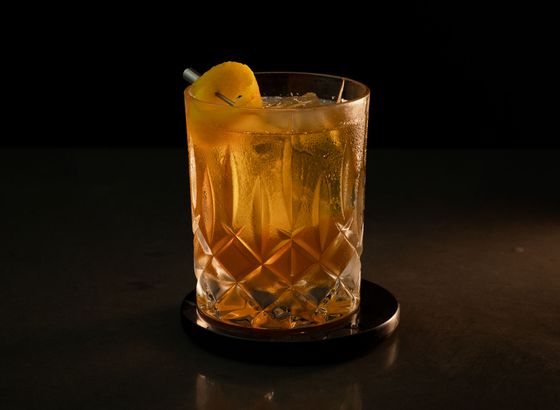
No. 198: Erin
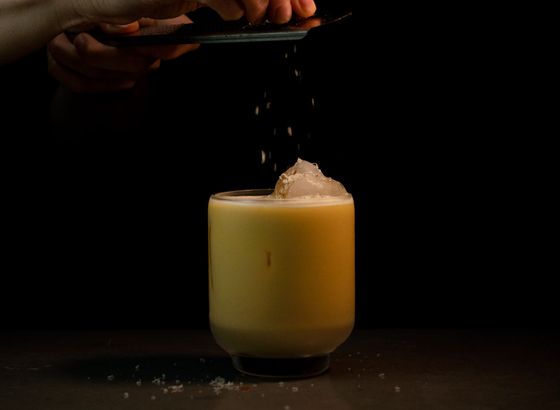
No. 197: Buttermilk Flip
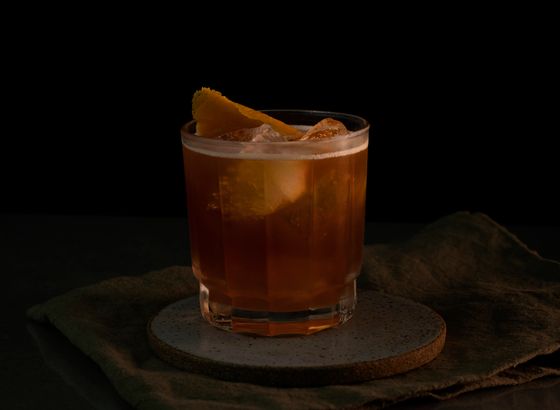
No. 196: Flannel Shirt
In broad terms, Brandy refers to a distilled spirit made from the fermented juice, mash, or wine of fruit. While the long tradition of French grape brandies has historically received much of the attention, it is in fact a global family of spirits. According to Brandy: A Global History the most popular theory regarding the spirit’s commercial origins revolves around Dutch merchants distilling wine as a preservation method and as a way to make it easier to transport.
Brandies made from wine include Cognac, Armagnac, Brandy de Jerez and Pisco. Brandy has a traditional age grading system, although its use is unregulated outside of Cognac and Armagnac, and frankly it’s not of much use when selecting for mixing. South American pisco has been produced in Peru since the 17th century. Pomace Brandy, such as grappa, is made from the pressed grape pulp, skins, and stems that remain after the grapes are pressed for wine. Fruit brandy, other than grape brandy, derived from one variety of fruit, is most commonly designated as “brandy” qualified by the name of said fruit. Clear fruit brandies, or eau-de-vie, are traditionally un-aged, resulting in a dry, aromatic, highly concentrated fruit flavor. These spirits are typically served at the end of a meal, or between courses.
The first brandies made in the United States used a variety of ingredients, but two of the more popular during the Colonial Age were peach brandy, mainly produced in what is now the southern US, and applejack distilled from cider, which originated on the east coast. Imported European brandies were the spirit of choice among wealthy North Americans, particularly southerners, but after the civil war that market fizzled. The availability of cheap rum, a growing taste for homegrown bourbon and rye, and a plague induced reduction in Cognac, all opened the door for new world spirits. On the west coast, Pisco was imported into the San Francisco area during the seventeenth and eighteenth centuries. Demand increased during California’s Gold Rush in the mid-nineteenth century and while it experienced increasing popularity throughout the rest of the century, Prohibition effectively destroyed the pisco market in the U.S.
By the 1800s brandy—usually Cognac—became popular as the base of American cocktails. The spirit is responsible for some pivotal moments in cocktail history, such as founding the Sour family (Brandy Crusta) or serving as the base of the the first mixed drink to be named something other than “Whiskey Cocktail” or “Brandy Cocktail” (Japanese). The early twenty-first century has once again seen a surge in popularity of a wide variety of brandies. At this point, unless otherwise specified, when a cocktail calls for brandy one generally reaches for Cognac, but it’s far from the only variety embraced in cocktails. Pisco has gained dramatically in popularity in recent years, with entire bar programs now focused on the spirit. Apple brandy has been embraced by many small American distillers, as well as a diverse range of fruit brandies in general, and there is an increasing variety available alongside their traditional European kin, ready to provide a respectable fruity boost to cocktails both new and old.
cognac • 12 recipes »
Rich, nutty, and sweet: Cognac is our go to brandy for mixing. It is a grape brandy double distilled and aged in oak in the Cognac region of France, entitled to be so designated by the laws and regulations of the French Government. It is double distilled in pot stills, then aged in oak barrels, which contributes to the drink’s complex flavor. Cognac is a pricey ingredient, so if you’re not in the market to spend, you’re better off trying a recipe designed for a different base spirit. Cognac is relatively versatile and well suited for split base cocktails like the classic Vieux Carre, Sidecar, or tiki’s Fog Cutter. It is most often employed as the base of spirit-forward pre-prohibition drinks, like the Sazerac and Champs Elysees and as the rich base of creamy drinks like nogs, the Brandy Alexander and Milk Punch. For a lighter approach, it is an excellent addition to classics like the Champagne cocktail.
pisco • 5 recipes »
Pisco is a South American clear to amber-colored grape brandy produced in specific winemaking regions of Peru and Chile. It is done so in accordance with the laws and regulations of the country of manufacture. The more commonly available Peruvian pisco is produced only using copper pot stills, aged for a minimum of 3 months in vessels that do not alter its properties, and distilled at bottle strength. Peruvian Pisco can fall into various classifications, reflecting rules for the area of production, the types and quality of grapes, and the distillation and aging of the spirit. The classic treatment of the spirit—the pisco sour—is so beloved that both countries claim it as their national drink. The spirit can be a bit acidic and difficult to mix, but its colorful bouquet of fruity-nuttiness has been picked up for creative spins on classics like the Fair Harvard or Maggie Smith. Depending on the style of pisco, flavor profiles can vary significantly. For bigger, earthier flavors we’ve used Pisco Porton, which stands up to other ingredients nicely. For lighter, more floral qualities we like Campo De Encanto Pisco.
apple brandy • 12 recipes »
Apple Brandy is composed of 100% distilled cider apples. Calvados is an apple brandy hailing from France, specifically the Normandy region. These are aged in oak casks for at least 2 years and lean towards nuanced, fleshy, and layered flavor. American apple brandy generally comes in two forms: either aged in various kinds of barrels, resulting in a rich, spicy brandy; or fresh un-aged eau de vie. American apple brandies are often confused with applejack, a historically unaged spirit produced by freeze distillation and one of the oldest continuously produced spirits in the United States. Most contemporary applejack is produced through distillation and mixed with other neutral grain spirits, resulting in a thinner, fairly brash interpretation. For many years Lairds was one of the few American apple brandies on the market. Thankfully, there is now an increasing variety of quality options from small distillers.
apricot brandy • 3 recipes »
This ingredient can cause some confusion. For mixing, there are two options: a sweet apricot liqueur, which may or may not have a brandy base, and an apricot eau de vie, a clear fruit brandy. We often use them interchangeably, but in some recipes, the eau-de-vie will require some tinkering with sweetness proportions, as it’s rather dry. This brandy's vibrant flavor and spice notes make it a popular fruit brandy for mixing. It’s also our preferred substitute for historical recipes that call for similar stone fruit liquors, such as peach brandy.
pear brandy • 5 recipes »
This classic style of eau-de-vie and popular French digestif has a brash unaged character. A cynical review may compare it to fruit flavored paint thinner. However, in small doses it is delicious mixed into autumn and winter inspired drinks. There are several great types of pear brandy lining better liquor store shelves: we like the American distilled St. George and Clear Creek. If you are looking for something a bit more exotic, we were recently turned on to the lovely F. Meyer Poire William.
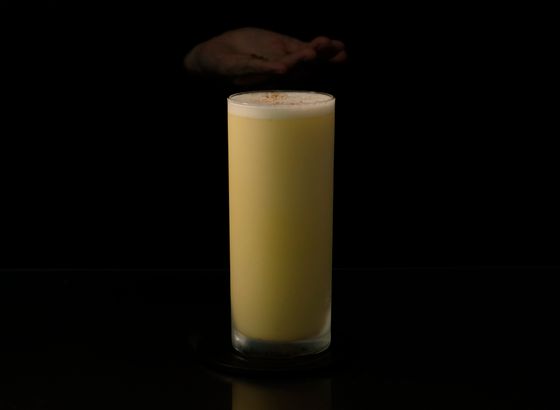
No. 195: El Tigre
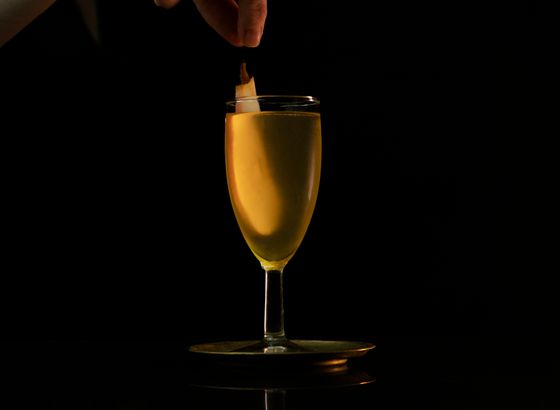
No. 194: Pale End of the Day

No. 193: Star
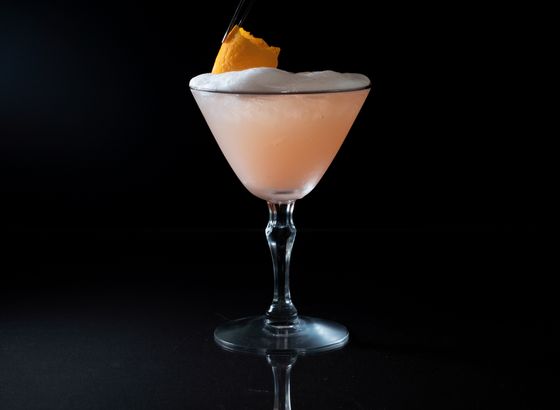
No. 192: Punch a la Romaine
Antoine Amedie Peychaud began dispensing his own homemade bitters from his pharmacy in New Orleans in 1838. Based on a family recipe, Peychaud would mix his bitters with cognac and serve it to patrons in a style of jigger called a coquetier, which means “egg cup” in french. While nobody knows where the term cocktail comes from, one New Orleans legend pins the name with Mr. Peychaud and his egg cup, which patrons struggled to pronounce. If this seems like an unlikely story, try listening to an authentic pronunciation of the word and the idea might come around. Peychaud’s mixture was so popular it began to grow outside of the pharmacy. It became particularly popular at the Sazerac Coffee House; so popular, in fact, that the mixture came to be known simply as a “Sazerac.”
Despite its connection with early cocktail history, Peychaud’s was not necessarily a popular choice by bartenders nationally. Neither Jerry Thomas nor Harry Johnson mention it in their important early bar books, and in general one would need to be pretty stubborn to find mention of it in any of the barbooks coming out of New York, London or Cuba. One city where this was not true: New Orleans. The excellent Famous New Orleans Drinks and How to Mix Em’ (1938) mentions it plentifully. Unsurprisingly, 1935’s Peychaud’s Original Cocktails also makes plenty of opportunities for it. New Orlean’s love of the stuff might also have saved it from the great bitters die-off that occurred before and during prohibition: as a nationwide ban on alcohol shut down nearly every independent bitters manufacturer, the many private drinking clubs in the crescent city kept Peychaud’s afloat. Through the rest of the 20th century, Peychaud’s didn’t get a lot of mentions in cocktail books, but it was one of only two major bitters to survive, and that worked in its favor during the early days of the cocktail renaissance in the 2000s. As inventive bartenders started searching for authentic ingredients, Peychaud’s rich history and antique label stood out.
Peychaud’s is much lighter on baking spices than other aromatic bitters, instead offering strong notes of citrus peel, cherry, and anise. This makes it an excellent choice in summer cocktails or anything that will benefit from bright, citrusy flavors. Peychaud’s can also act as a coloring agent; as Brad Thomas Parsons notes in his book Bitters: “Its bright red cough-syrup color also helps it stand out from the competition, and just a few dashes can cause a cocktail to take on its trademark candy-apple blush.” Employ Peychaud’s to lighter-colored drinks to create a warmer, more appetizing hue that is sure to turn heads. Drinks like the Queens Park swizzle, Suissesse, and Pendennis use it in this way. In larger doses, it can turn drinks a bright, stunning red. Try the Sawyer or Seelbach to see this stronger effect.
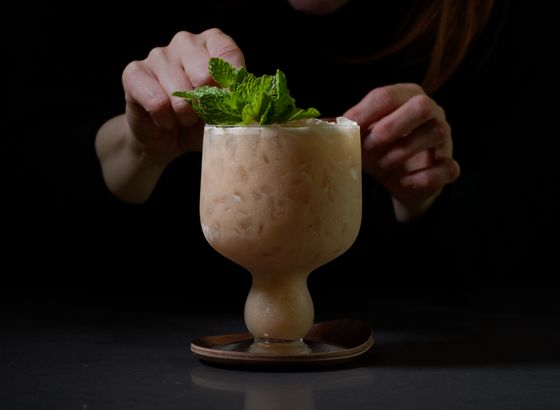
No. 191: Odd Bedfellows

No. 190: Lavender Lady
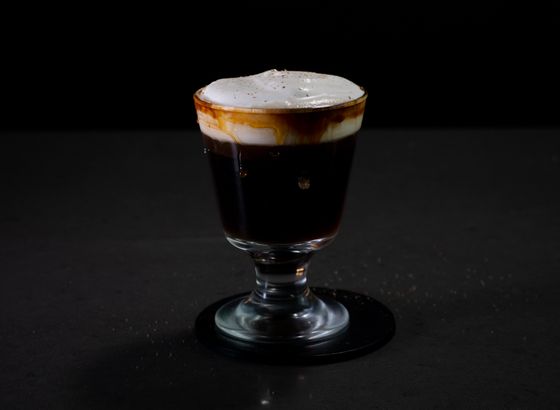
No. 189: Spanish Coffee

No. 188: Fionia
Tequila is a member of the family of spirits derived from the agave plant. A fermented beverage known as pulque was consumed in central Mexico prior to European contact. This is the most frequently referenced descendent of both tequila and mezcal. Technically, all tequila is a variety of mezcal, a broader variety of agave spirit. However, mezcal is marketed as a stylistically distinct beverage and is popularly understood as a sibling—not a parent—of tequila.
Both distilled spirits are made from agave, but tequila is exclusively made from blue Weber agave and as a product of origin can only be produced in the state of Jalisco and some parts of Guanajuato, Michoacán, Nayarit, and Tamaulipas. It's made by steaming the heart, or piña, of the agave plant in above-ground ovens and distilling the liquid in copper pots. Mezcal, on the other hand, can be made from multiple types of agave and is traditionally made in various Mexican states. The spirit’s distinct process of roasting the agave in underground pits lined with burning hot rocks gives mezcal the signature earthy, smoky flavor. Much of mezcal is still artisanal in nature, produced using small-batch and ancient techniques. The result is a distinct expression of each agave used and terroir, and a category of spirit that offers a diverse range of flavors.
Mezcal and tequila varieties are defined and categorized by their aging period. Blanco, plata, silver—or in the case of mezcal blanco or joven—is unaged, but sometimes rested in neutral holding tanks for up to 2 months. Reposado is aged a minimum of two months, but less than a year in oak barrels. Añejo is aged a minimum of one year, but less than three years in small oak barrels. Finally, the more recently established tequila category of Extra Añejo is aged a minimum of three years in oak barrels.
Although these spirits have been produced for centuries, they have a less storied history in the cocktail world. One would be hard pressed to find someone unfamiliar with the Margarita, and a few modern classics have entered the canon like the Oaxaca Old Fashioned, yet there are still too few agave spirit-based cocktails considered standards. We typically emplo blanco and reposado interchangeably; however a purist may disagree. Pricier, more complex anejo and extra anejo are best reserved for sipping, and can overwhelm many mixes. Reserve anejo for the first time you try a drink that specifically calls for it or when you’re feeling indulgent. In recent years, bartenders have embraced mezcal, both in original cocktail recipes and in variations of classic concoctions like the Oaxaca Old Fashioned.
blanco tequila • 10 recipes »
Blanco tequila is unaged, though sometimes rested in neutral holding tanks for up to two months, resulting in a vegetal expression of agave. Depending upon the region or elevation the agave is grown in, the resulting spirit can range in flavor from sharp, fresh and grassy to tangy and sweet. Reach for the higher quality 100 percent agave tequila, with no added sugars (as opposed to the inferior mixtos: made from a mix of agave and other sweeteners). Blanco’s fresh expression of the agave plant blends wonderfully in citrusy Margarita style drinks. For the pitcher drinking Margarita lover, they’re conveniently also the most affordable.
reposado tequila • 15 recipes »
Reposado tequila spends between two months and one year maturing in oak barrels. As with other spirits aged in casks, tequila takes on the flavors of the wood, while the harshness of the alcohol mellows. The result is a smooth, spiced, slightly sweet spirit that inches closer in flavor to other oak aged spirits like whiskey. Reposado strikes a balance between the bright agave notes of blanco and spicy, subtle oak sweetness of barrel aging, making it a very versatile option. They work equally well in citrusy drinks as well as spirit forward drinks, and are full bodied enough to stand up nicely alongside mezcal’s aggressive flavors in a split base. Employ reposado in drinks requiring more spice or vanilla notes, such as the festive Stardust, or a split base like the Si-Guey. Only minimally more expensive than blanco, reposado is a great way to add aged complexity without breaking the bank.
mezcal • 10 recipes »
Most mezcals on the market are blancos, and this is our go to for mixing. There is a wide variety of flavor available, ranging from the signature earthy smoke, to a brighter, floral profile—a delicious example of which is Alipus San Andre. The spirit’s smoky, briny flavors are too intense in large doses and are instead often used alongside tequila as a split base or applied in small amounts as a modifier. The small dose application is also convenient given mezcal's higher price tag.
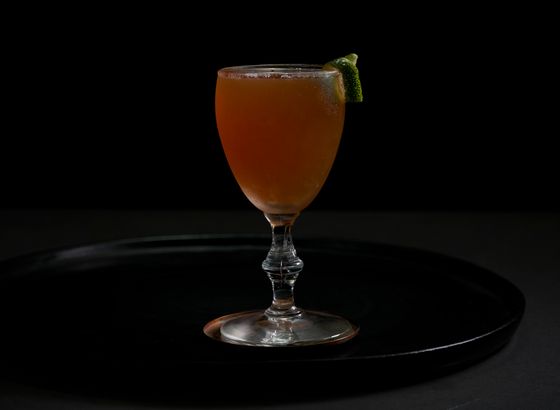
No. 187: Doctor Cocktail

No. 186: Harvard
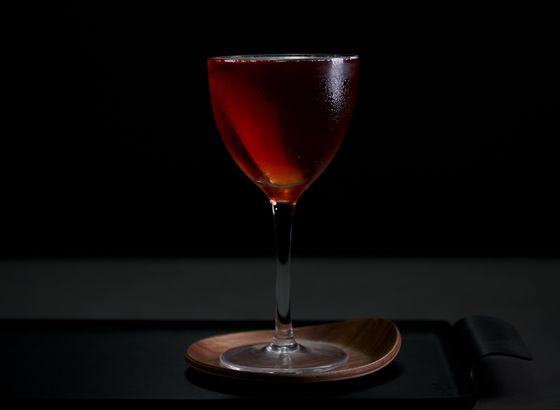
No. 185: Suburban
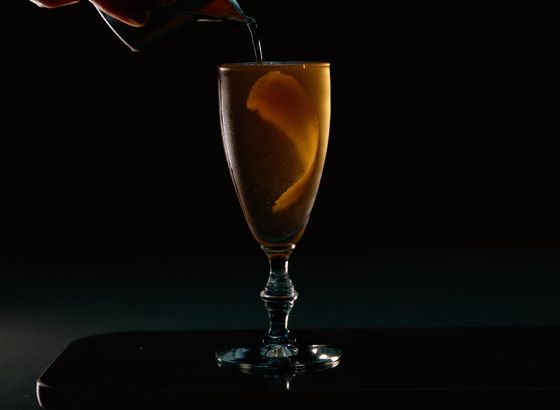
No. 184: Chicago Cocktail
Lemon has been a popular addition to mixed drinks since the earliest recipes were put to paper. In the 1700s it was used as a popular addition to large punches, as the fruit helped perk up the acidity level of the mixture and, when mixed with sugar and spices, could offset the often dubious quality of the base spirit. In the carribean, various imported fruits were combined to make what is now called planter's punch. In the states, it was frequently used to perk up punches like the negus punch and philadelphia fish house punch.
In the 1800s punch began to evolve into new, individually served drinks as manufactured straws and ice became more readily available. As David Wonderich notes in Imbibe!,: “The glass of Punch went forth in the new land and multiplied, begetting a whole host of other drinks. Even the Cobbler, an unpunchy drink if ever there was one, can be seen as one of its offshoots, combining as it does wine, sugar, ice, and a couple of slices of citrus shaken in.” Indeed, lemon followed this transformation and became a popular adornment atop afternoon drinks like the sherry cobbler, morning sippers like the morning glory fizz, and dinner accompaniments like the whiskey sour and brandy crusta. That final drink would become a precursor to a host of sours served up, as the shaker slowly replaced the toddy stick and bars at the turn of century began fixing things like the sidecar, aviation, and last word.
lemon juice • 50 recipes »
Unlike bottled spirits, which are typically manufactured and tested for consistency, lemons are a natural product of the earth and therefore vary in flavor and acidity. Of course, industry is always apt to solve nature’s “inefficiencies”, and as such bottled lemon can be procured at any supermarket. You will never see us recommend this stuff, and for good reason: it tastes really bad. We wouldn’t use it in our food, our cocktails, or to clean our floors, if we did that kind of thing. Yes, lemons are annoying to juice and vary in flavor, but if you wanted something easy, why not stick to jack and coke? Working with fresh lemons adds a new variable, but nothing that can’t be easily handled: before you serve any drink, pour a little bit into a shot glass. Try the drink, and add additional sweetener if the lemons are higher in acidity. If you are familiar with the straw trick; don’t use it. The nose of the drink greatly affects your perception of the drink’s balance; something that the straw trick doesn’t account for.
How you juice your lemons can change the way your drink tastes. Pulp, seeds, and other impurities can be macerated into the liquid, imbibing bitterness into the mixture. In his book Liquid Intelligence, Dave Arnold writes “Forget hand reamers; they suck. Upright lever-pull citrus presses are good for grapefruits that won’t fit in smaller hand presses, but they are slow. The best small-citrus press is the lowly swing-away hand press.” We generally agree with Dave. If you don’t already have a hand press, we suggest a stainless one, as anything with fun colors will quickly be compromised by repeat exposure to acidity. Lemon and Lime have nearly identical degrees of acidity (Arnold clocks it at 6%) which would theoretically make them interchangeable, but generally speaking this isn’t true. Lemon is mostly citric acid, while lime is a combination of citric and malic acid, giving it a much smoother, fruitier taste. Drinks like the jack rose, aviation, and presbyterian are all excellent places to start.
lemon peel • 24 recipes »
Fresh lemon peel is more than just a pretty decoration: the oils locked in the peel of lemon have a very different scent that that contained in the juice. If you pick up a glass of lemon juice and smell it, you won’t notice much. In fact: if you ever bottle lemon and lime juice for a party, you would be wise to label them, as they are ripe for mixing up. Peel is where the lemon flavor that we taste in candies and cakes is actually found, and when you twist or bruise a lemon peel, you are imparting the same wonderful scent to your drink. Classics like the brandy crusta, sazerac, clover club, and martinez all show the wonderful and amazing power of the peel.
lemon twist • 11 recipes »
A lemon twist will impart similar qualities as a lemon peel, but the lower surface area reduces the impact for more delicate flavor profiles. This is great in delicate gin drinks like the martini, turf, and fair Harvard. Making lemon twists is easiest with a citrus zester, but if you don’t have one, try making a lemon peel with a traditional peeler, then cutting it into thin strips with a knife. The extra legwork might rub off a bit of the oil, but it won’t ruin the drink. Peeling the citrus over the drink will mist even more oil onto the glass, amplifying the impact. This isn’t always necessary, and depends on the drink.
lemon wheel • 2 recipes »
A lemon wheel is a bit showier than a peel. To make one, choose a smaller lemon and slice the end off. Make another cut a few millimeters into the lemon, slicing off a circular wheel. You can make one more slit halfway down the middle of the slice for placing on the edge of the glass.
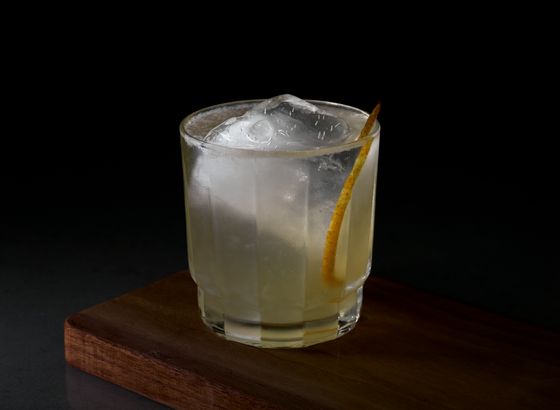
No. 183: Pære Dansk
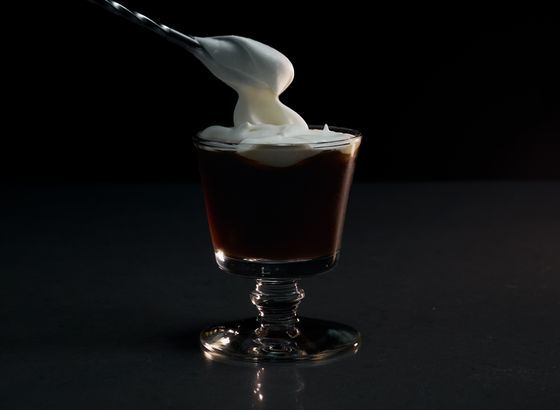
No. 182: La Dominicana
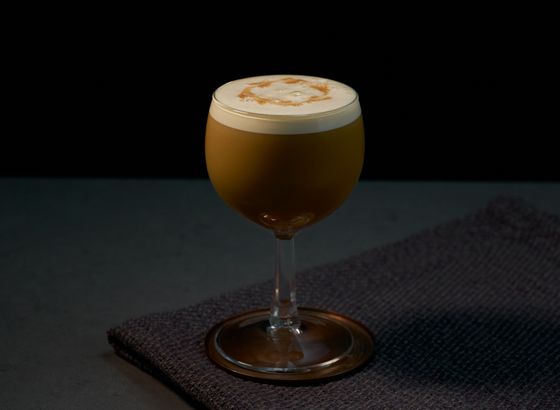
No. 181: Cynar Flip

No. 180: Diki-Diki
Given the name allspice by the English for its ability to mimic clove, cinnamon, nutmeg, and ginger all at once, the flavors derived from the Pimenta dioica tree are essential to cooking in the West Indies. This tropical bush grows naturally on many carribean islands as well as the Yucatan peninsula, where it was mixed with drinking chocolate by the Mayans. When the Spanish arrived in the Americas, they discovered Allspice and—as was so often the case—found a willing buyer in the English, who liked to use it in pickling brines and stews. Today, the finest Allspice comes from Jamaica, where the climate and soil are perfectly suited for growing it. The Jamaicans employed their homemade allspice dram for cooking, as a marinade for meats or an easy flavoring agent in sauces and stews, but as the cocktail movement swung into full effect, enterprising bartenders began experimenting with it in their drinks.
No cocktail represents the early employment of allspice dram better than the Lion's Tail, which was credited to L.A. Clarke in 1937’s Cafe Royal Cocktail Book, though the recipe might have remained obscure if it weren’t for Ted Haigh’s loving feature of it, along with allspice dram, in his seminal Vintage Spirits and Forgotten Cocktails. Allspice dram would eventually discover its true application with the rise of tiki; our 1947 copy of Trader Vic’s Bartender’s Guide lightly employs Allspice dram in short cocktails like the Porto Rico and Mexicano. Allspice dram was poured more liberally by the father of Tiki, Donn Beachcomber, in his infamous three dots & a dash. While Donn didn’t use allspice dram in his famous navy grog, Trader Vic did, and so did Beachbum Berry when he revived the recipe in 2007 for his classic Ancient Mariner.
When Ted Haigh first featured the Lion’s Tail and the Ancient Mariner in Vintage Spirits and Forgotten Cocktails, he bemoaned the lack of Allspice Dram on local shelves. By the second edition of the book, Haus Alpenz had begun importing its excellent St. Elizabeth Allspice Dram, which remains a standard to this day with its intensely spiced sweetness. Hamilton Rum now offers a fabulous alternative to Haus Alpenz with a funkier profile more akin to a swedish punsch. In addition, Bitter Truth sells one, though we haven’t tried it. Allspice dram may be used as a modifier, as Trader Vic’s team often employed it, by adding a few dashes. It may also be used as a sweetener, as the lion’s tail does, making it an exceptionally versatile choice for bars of any size. Because it is sweet and spiced, with a balanced profile, allspice dram is quite easy to work with. Try it out when developing new recipes for yourself, or as a subtle tweak to popular classics. If that weren't enough perks, allspice dram can continue to be employed the way it was originally intended: as a flavoring agent in sauces and marinades.

No. 179: Grasshopper
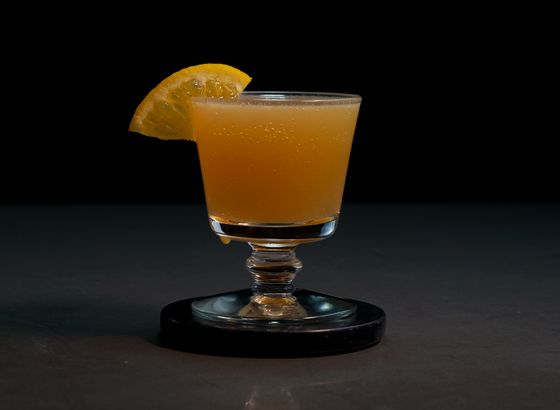
No. 178: Monkey Gland
